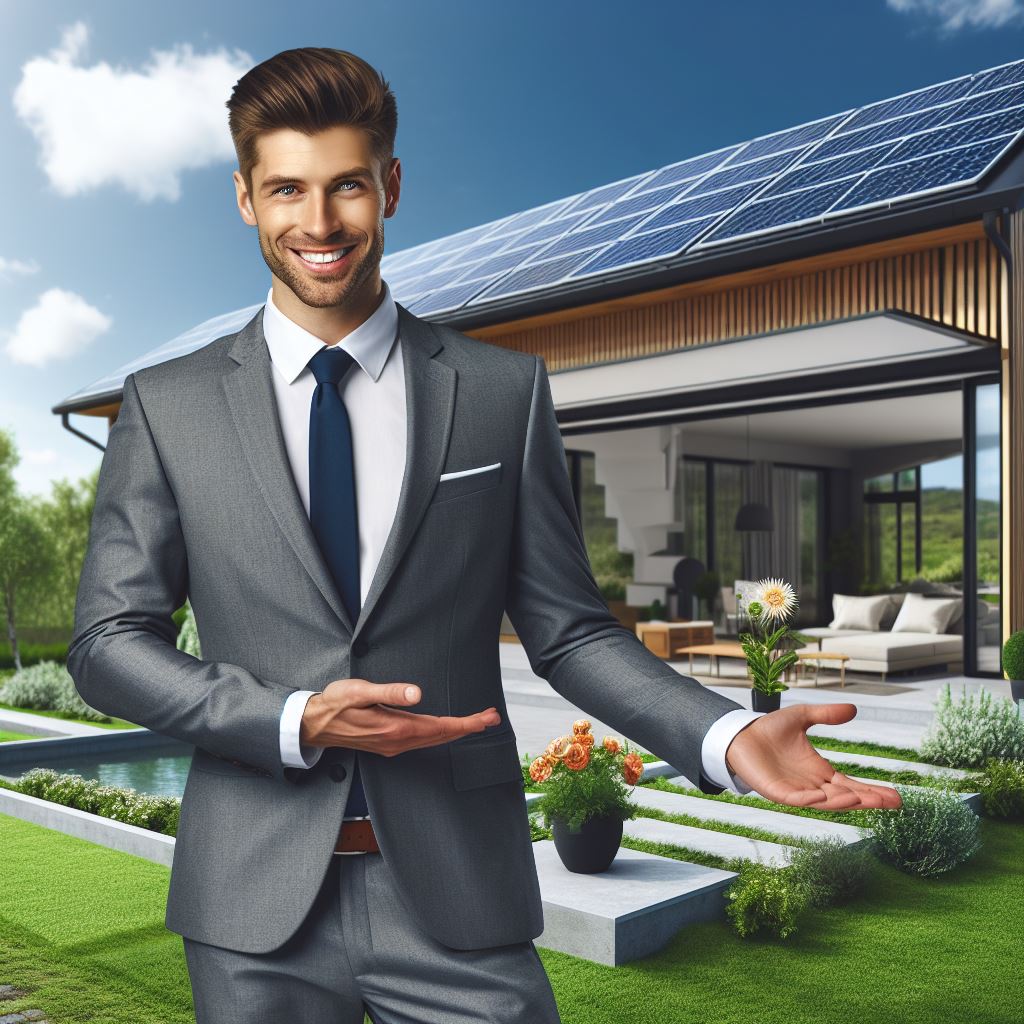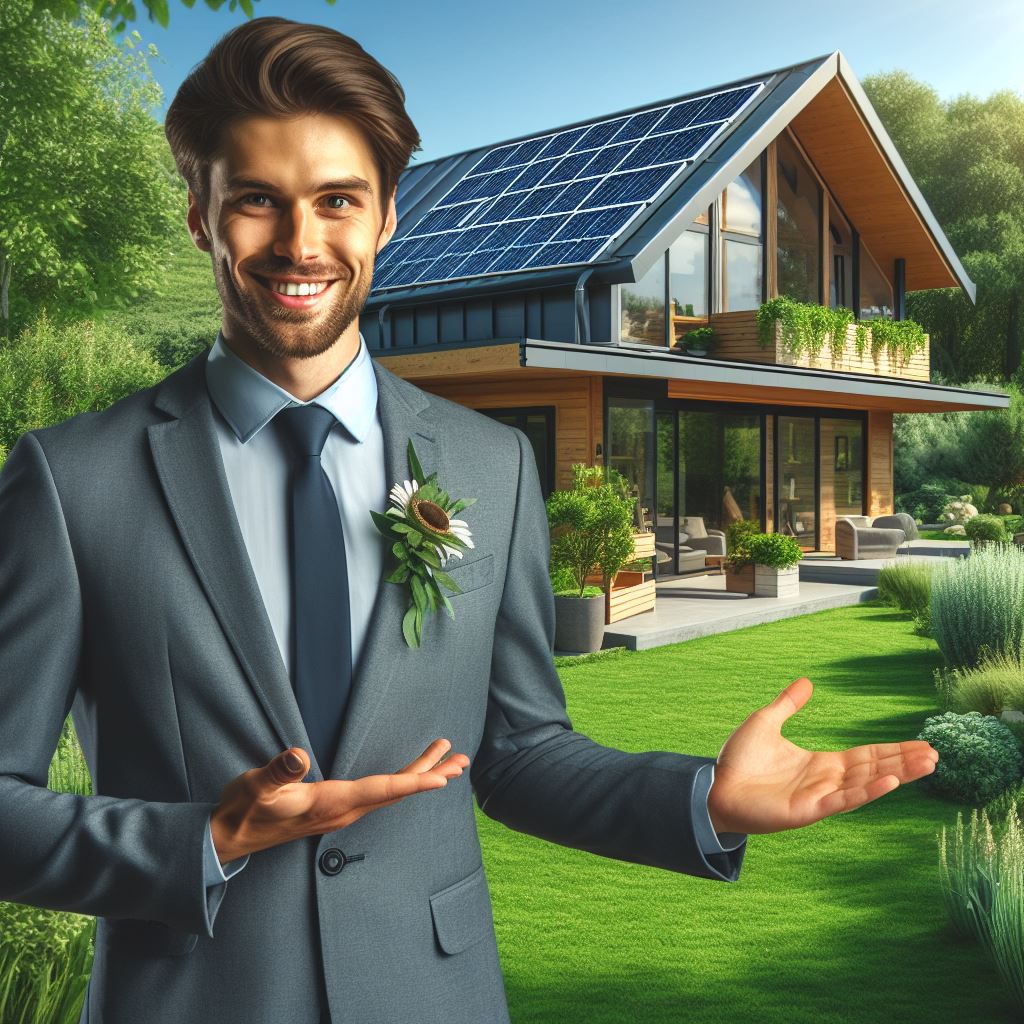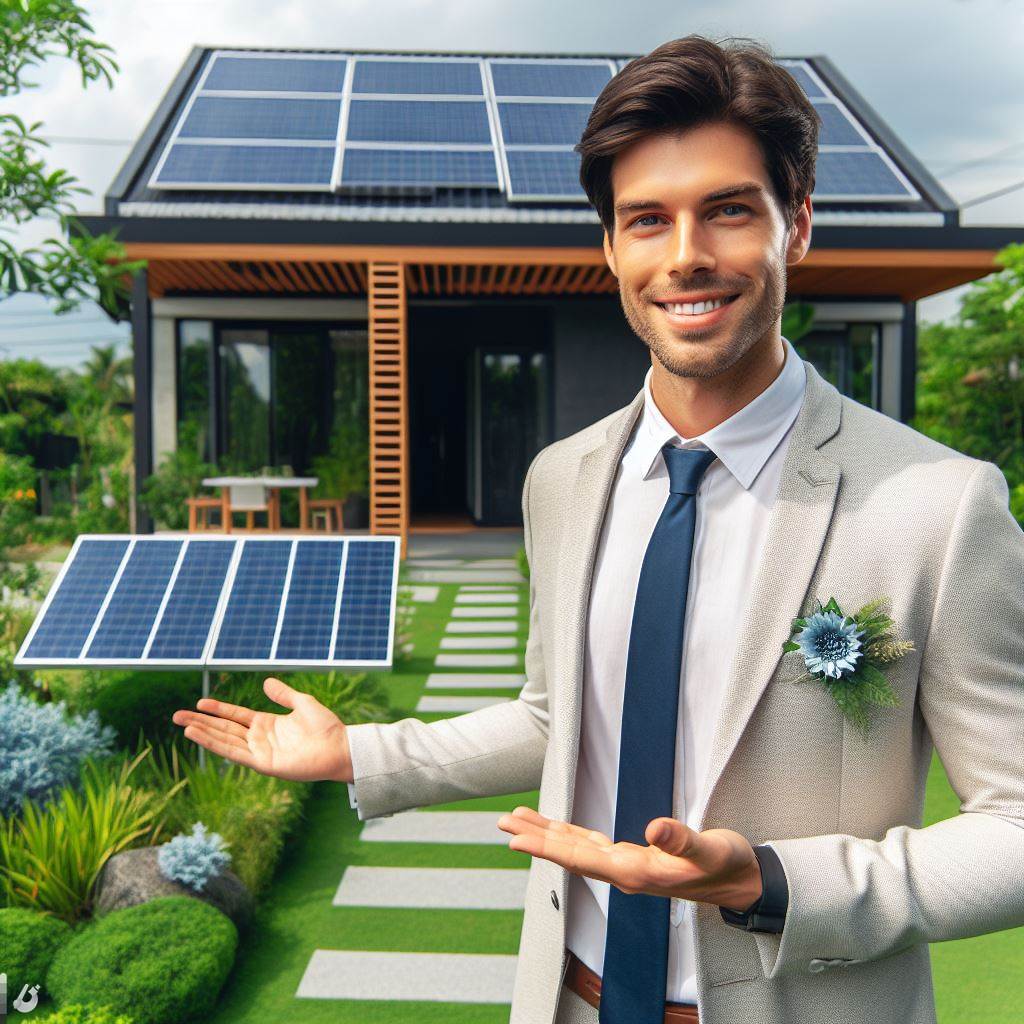Introduction
Real estate investments are crucial for financial stability, and there is a growing interest in green homes.
This blog will discuss why green homes are the future of real estate investments by highlighting their benefits for investors and the environment.
Real estate investments play a vital role in building wealth and providing a stable income source.
With increasing awareness about climate change and the need for sustainable living, people are shifting towards green homes.
Green homes are the future of real estate investments as they offer numerous benefits to investors and the environment.
Green homes not only reduce carbon footprint but also save energy and resources.
Investing in green homes helps investors to gain significant financial returns in the long run.
The demand for green homes is rising, leading to increased property value and higher rental rates.
Investors can also benefit from tax incentives and rebates offered for green home investments.
Green homes promote a healthier and safer living environment by using eco-friendly materials and technologies.
Investing in green homes aligns with the values of socially responsible investors and contributes to a sustainable future.
The environmental benefits of green homes include reduced energy consumption, lower greenhouse gas emissions, and improved air quality.
Green homes are built using renewable energy sources like solar panels, reducing reliance on fossil fuels.
Green home investments contribute to creating a greener and more sustainable world for future generations.
In essence, green homes have emerged as a promising investment option in the real estate market.
Investing in these eco-friendly properties not only benefits investors financially but also helps in creating a cleaner and more sustainable environment.
Therefore, it is evident that green homes are indeed the future of real estate investments.
Definition and Benefits of Green Homes
Definition of green homes
A green home is a residential building designed to be environmentally friendly and sustainable.
It incorporates various practices and technologies to minimize its negative impact on the environment.
Green homes aim to promote energy efficiency, reduce waste, and improve indoor air quality.
Energy efficiency and cost savings
One of the key benefits of green homes is their emphasis on energy efficiency.
These homes are designed to maximize insulation, minimize air leakage, and use energy-efficient appliances.
By reducing energy consumption, homeowners save money on utility bills in the long run.
Green homes often employ renewable energy systems like solar panels, further decreasing dependence on traditional energy sources.
Reduced environmental impact and carbon footprint
Green homes significantly decrease their environmental impact compared to conventional homes.
By utilizing sustainable building materials, such as recycled or locally sourced materials, they minimize resource depletion.
Green homes also employ water-conservation strategies, such as rainwater harvesting and efficient plumbing fixtures.
These practices help reduce water consumption and lower the demand for energy-intensive water treatment processes.
Moreover, green homes aim to reduce their carbon footprint by offsetting or minimizing greenhouse gas emissions.
This can be achieved through the use of renewable energy sources and energy-efficient systems.
Overall, investing in green homes offers multiple benefits both to homeowners and the environment.
By reducing energy consumption and utilizing renewable energy sources, homeowners can save money in the long term while minimizing their environmental impact.
Additionally, green homes often provide better indoor air quality, creating a healthier living environment.
These homes also have higher resale values due to their desirable features and long-term cost savings.
Investors recognize the growing demand for sustainable housing, making green homes a promising real estate investment option.
As environmental concerns continue to rise, the future of real estate investments lies in the development and promotion of green homes.
Furthermore, government initiatives and incentives further support the growth of green homes, making them an attractive option for buyers.
Ultimately, the shift towards green homes not only benefits individual homeowners but also contributes to a greener and more sustainable future for all.
Read: How AI is Reshaping Real Estate Strategies
Green Home Features and Technologies
Green homes are becoming the future of real estate investments, and they come with a range of features and technologies that promote sustainability and efficiency.
These features and technologies not only benefit the environment but also make these homes more appealing to potential buyers.
In this section, we will discuss some of the key features and technologies found in green homes.
Energy-efficient appliances and lighting
One of the primary features of green homes is the use of energy-efficient appliances and lighting.
These homes are equipped with appliances that consume less energy, such as ENERGY STAR rated refrigerators, washing machines, and dishwashers.
Energy-efficient lighting options, such as LED bulbs, are also common in green homes.
These appliances and lighting solutions help reduce energy consumption and lower utility bills.
Renewable energy sources (solar panels, wind turbines)
Green homes often rely on renewable energy sources to power their energy needs.
Solar panels and wind turbines are popular choices for generating clean, renewable energy.
Solar panels convert sunlight into electricity, while wind turbines utilize wind energy to generate power.
By harnessing these renewable energy sources, green homes reduce reliance on traditional electricity sources and lower carbon emissions.
High-quality insulation and windows
Green homes are designed with high-quality insulation and windows to improve energy efficiency.
Insulation helps regulate indoor temperature by minimizing heat transfer, which results in reduced energy consumption for heating and cooling.
In addition, energy-efficient windows with double or triple glazing minimize heat loss during winter and prevent heat gain in summer.
These features enhance the overall comfort of green homes and reduce energy usage.
Water conservation technologies
Another important aspect of green homes is the incorporation of water conservation technologies.
These technologies aim to reduce water consumption and promote sustainable water usage.
Green homes may feature low-flow faucets, toilets, and showerheads, which limit water flow while maintaining functionality.
Rainwater harvesting systems are also commonly installed to collect and store rainwater for irrigation purposes, reducing the demand for freshwater resources.
In fact, green homes are equipped with various features and technologies that prioritize energy efficiency, renewable energy, insulation, and water conservation.
These features not only benefit the environment but also offer numerous advantages to homeowners, such as lower utility bills and increased comfort.
As the demand for sustainable living grows, investing in green homes becomes a wise and forward-thinking choice.
Read: Innovative Tech Transforming Real Estate in 2024
Financial Benefits of Green Homes
Increasing Property Value
Investing in green homes not only supports a sustainable future but also offers several financial benefits.
Green homes have the potential to increase property value due to their attractiveness to buyers and the use of sustainable materials.
Energy-efficient features contribute to the overall value of the property, allowing homeowners to sell their homes at a higher price in the future.
Higher Resale and Rental Demand
Additionally, green homes have a higher resale and rental demand.
With more people becoming environmentally conscious, the demand for sustainable housing is growing.
This creates a competitive advantage for green homes, attracting buyers and tenants who are willing to pay a premium for eco-friendly living spaces.
Moreover, green homes tend to have faster resale times and higher rental occupancy rates, providing homeowners with more profitability and a quicker return on investment.
Government Incentives and Tax Credits
Governments also play a significant role in promoting green housing through incentives and tax credits.
Many countries have implemented programs that offer financial support to homeowners who invest in energy-efficient upgrades.
These incentives can significantly reduce the upfront costs of implementing green features in homes, making it more financially viable for homeowners to adopt sustainable practices.
Potential Savings on Utility Bills
Another financial benefit of green homes is the potential savings on utility bills.
Green homes incorporate energy-efficient appliances, proper insulation, and renewable energy systems such as solar panels.
These features result in reduced energy consumption, leading to lower utility bills.
Over time, the savings on energy costs can accumulate, providing homeowners with significant financial benefits in the long run.
In short, investing in green homes not only has positive environmental impacts but also offers substantial financial benefits.
The increasing property value, higher resale and rental demand, government incentives, and potential savings on utility bills make green homes an attractive option for real estate investments.
By adopting sustainable practices, homeowners can contribute to a greener future while reaping financial rewards.
Read: Effective Communication with Challenging Clients

Environmental Benefits of Green Homes
Green homes not only offer financial advantages but also bring significant environmental benefits.
By adopting sustainable practices, these homes contribute to reducing greenhouse gas emissions, conserving natural resources, and providing healthier indoor environments.
Let’s take a closer look at each of these aspects.
Reducing greenhouse gas emissions
Green homes are designed to minimize the carbon footprint by utilizing renewable energy sources like solar power.
They incorporate energy-efficient technologies and appliances that consume less electricity, reducing the reliance on fossil fuel-based energy production.
This results in a substantial reduction in greenhouse gas emissions, which contribute to climate change.
Conservation of natural resources
Green homes prioritize resource conservation, particularly water and energy.
They employ energy-efficient measures such as insulation, double-glazed windows, and efficient HVAC systems to minimize energy consumption.
Additionally, these homes utilize low-flow plumbing fixtures and rainwater harvesting systems for water efficiency.
By conserving resources, these homes help preserve the environment and ensure a sustainable future.
Healthier indoor environments
Green homes prioritize the well-being of occupants by focusing on indoor air quality. They use materials free from harmful chemicals, ensuring cleaner indoor air.
Additionally, these homes have efficient ventilation systems that circulate fresh air, reducing the presence of pollutants and allergens.
This improves the overall indoor air quality, leading to healthier living spaces and reducing the risk of respiratory illnesses.
The environmental benefits of green homes extend beyond the individual dwelling to the surrounding community and ecosystem.
Positive impact on communities
Green homes contribute to the establishment of sustainable neighborhoods and communities.
When multiple green homes are built together, they collectively create an eco-friendly environment.
This helps create a sense of community and encourages residents to adopt green practices such as carpooling, composting, and recycling.
The integration of green homes in communities promote sustainability and environmental consciousness, benefiting everyone involved.
Preservation of natural habitats
Green homes promote sustainable land use by reducing urban sprawl.
By utilizing existing land and renovating older structures, these homes minimize the need for new construction on undeveloped land.
This preserves natural habitats, conserves biodiversity, and helps maintain the balance in local ecosystems.
It also reduces the strain on infrastructure and public services in urban areas.
Improved resilience to climate change
Green homes are designed to withstand the impacts of climate change.
Their energy-efficient features, such as solar panels and energy storage systems, enable them to function independently during power outages or in areas prone to extreme weather events.
They minimize reliance on centralized electricity grids, making communities more resilient in times of natural disasters.
This adaptability is crucial in the face of changing climatic conditions.
In general, green homes offer various environmental benefits that significantly contribute to a sustainable future.
These homes reduce greenhouse gas emissions, conserve natural resources, improve indoor air quality, foster sustainable communities, preserve natural habitats, and enhance resilience to climate change.
By investing in green homes, individuals can make a positive impact on both their personal finances and the environment.
It is a win-win situation that paves the way for a greener and healthier real estate industry.
Read: Transform Difficult Real Estate Clients
Market Trends and Demand for Green Homes
Emerging trends in the real estate market
- Increased focus on environmentally-friendly building materials and energy-efficient designs.
- Rise in the popularity of green certifications such as LEED and ENERGY STAR.
- Growing interest in smart homes with sustainable features and advanced technologies.
- Preference for homes located in walkable neighborhoods with access to public transportation.
- Shift towards mixed-use developments that combine residential and commercial spaces.
Millennial and Gen Z preferences
- Younger generations show a strong inclination towards eco-friendly and sustainable living.
- Millennials and Gen Z prioritize energy efficiency, renewable resources, and reduced carbon footprint.
- Preference for open floor plans, natural lighting, and indoor-outdoor living spaces.
- Desire for smart home features that allow for energy monitoring and control.
- Seeking communities that offer green amenities like parks, gardens, and biking trails.
Growing demand for sustainable living
- Increasing awareness about climate change and environmental issues driving demand for green homes.
- Interest in reducing energy bills and living in healthier indoor environments.
- Government incentives and regulations promoting sustainable construction and energy efficiency.
- Rise in the availability of green building materials, technologies, and renewable energy sources.
- Concern for future resale value as green homes are often more attractive to potential buyers.
In review, the market trends and demand for green homes are on the rise as emerging generations seek sustainable, energy-efficient, and environmentally-friendly options.
Developers and real estate professionals need to adapt to these preferences to remain competitive in the market and meet the evolving needs of homebuyers.
Challenges and Considerations for Green Home Investments
In the realm of real estate investments, the future is decidedly green.
However, navigating the landscape of sustainable housing presents unique challenges and considerations.
Investing in green homes comes with its own set of challenges and considerations. Here are some key factors to keep in mind:
Upfront Costs and Investment Returns
Firstly, prospective investors must grapple with the upfront costs associated with green homes.
While these initial investments may seem daunting, they are offset by long-term returns.
Energy-efficient upgrades not only contribute to a healthier environment but also lead to significant savings on utility bills over time.
Investing in green homes demands initial capital but promises long-term returns. Efficiency upgrades save on bills.
Access to Financing Options
Accessing financing options poses another hurdle for those interested in green investments.
However, various grants, loans, and incentives are available specifically for sustainable projects.
Understanding and leveraging these financial resources can make green investments more accessible.
Securing funds for green projects can be challenging. Explore grants, loans, and incentives tailored for sustainability.
Retrofitting Existing Homes vs. Building New Green Homes
Moreover, investors must decide between retrofitting existing homes or building new green homes from scratch.
Retrofitting offers the advantage of repurposing existing structures, but constructing new green homes allows for customization and integration of the latest sustainable technologies.
Decide between retrofitting existing structures or constructing new green homes. Each option has distinct considerations.
Certification and Verification Processes for Green Homes
Furthermore, ensuring the authenticity of green claims is paramount.
Certification and verification processes validate a property’s sustainability credentials, enhancing its marketability and credibility.
Investing in certified green homes not only aligns with environmental values but also appeals to a growing market of eco-conscious buyers.
Ensure your green home meets standards through certification. Verification processes authenticate sustainability claims, enhancing marketability.
In a nutshell, while green home investments present challenges, they also offer lucrative opportunities for investors committed to sustainability.
By addressing upfront costs, accessing financing options, navigating retrofitting versus new construction, and prioritizing certification and verification, investors can successfully navigate the evolving landscape of green real estate.
Conclusion
Green homes offer numerous benefits for real estate investments.
They not only contribute to a sustainable future, but also provide financial advantages for investors.
Green homes are proven to have lower energy costs, reducing expenses and increasing potential profits.
They have a higher resale value and attract environmentally conscious tenants, ensuring a steady income stream.
Investors should seriously consider the potential of green homes in their portfolios.
By incorporating sustainability into their investment strategy, they can tap into a growing market and align themselves with the increasing demand for eco-friendly properties.
The future of real estate investments lies in sustainability.
As the world becomes more environmentally conscious, properties that prioritize green features will become increasingly valuable.
Moreover, governments and regulatory bodies are supporting sustainable practices and offering incentives, making green homes even more attractive for investors.
To stay competitive and maximize returns, investors must embrace the green revolution in real estate.
It is not only an ethical choice but a smart financial decision.
The future of real estate investments is undoubtedly intertwined with sustainability and green homes.
Investors who recognize this and adapt their portfolios accordingly stand to gain both financially and environmentally.
So, let’s take a leap forward into a future where green homes are the backbone of real estate investments.
Together, we can build a greener and more sustainable world while reaping the benefits of smart investing.




